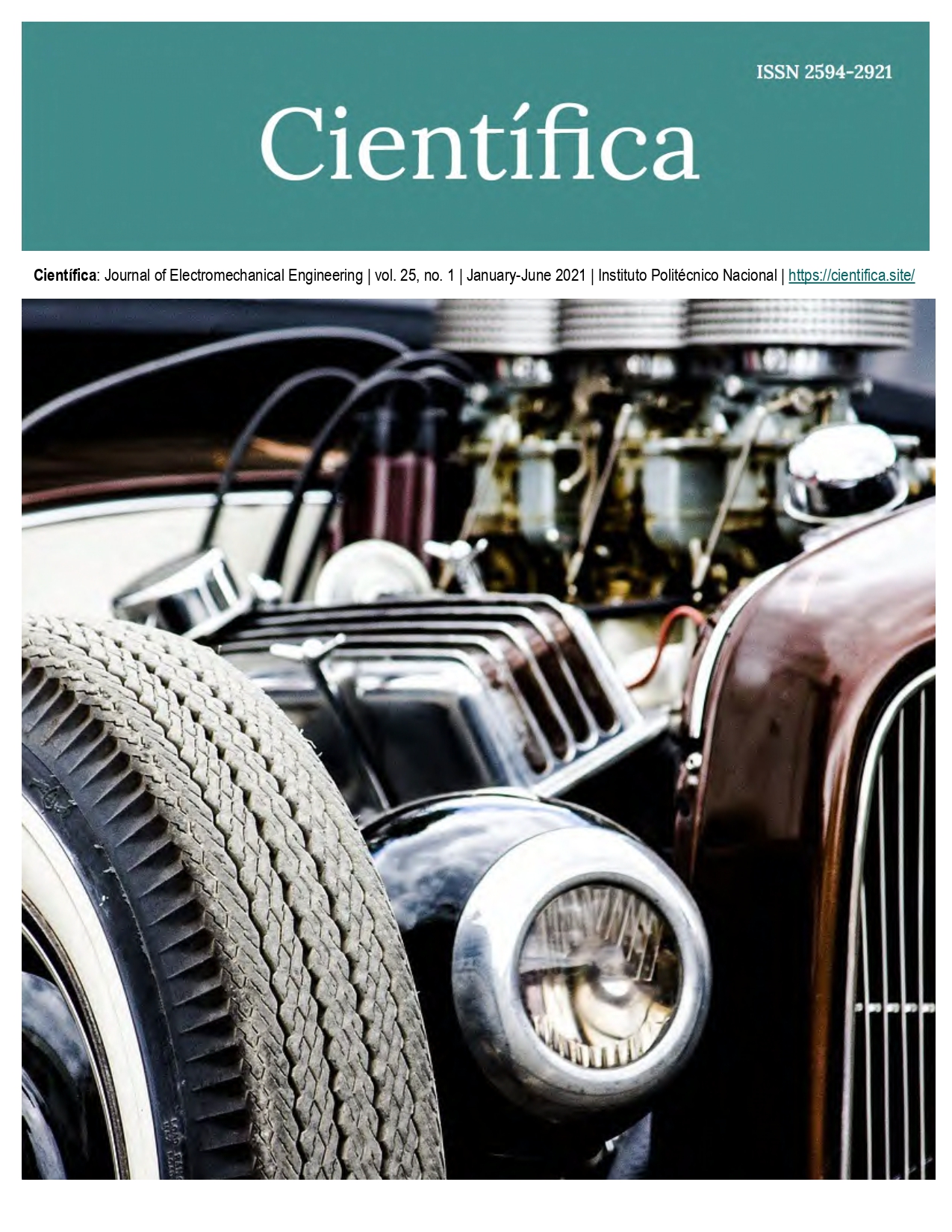Design Methodology for five-bar Parallel Robots with two Degrees of Freedom
DOI:
https://doi.org/10.46842/ipn.cien.v25n1a05Keywords:
brushless motor, design methodology, kinematics, simulationAbstract
In this paper, a methodology for the design of two-degree-of-freedom five-bar parallel robots is proposed that makes use of technological tools to simplify the design process. The use of simulators allows design without the need for the use and calculation of the dynamic model of the system, thus speeding up the design process and allowing design adjustments efficiently. The methodology is presented with a flow diagram where the following steps are developed: definition of problem and constraints, calculation of inverse kinematics, proposal of the length of the links, proposal of actuators, proposal of design and material of links, CAD design, dynamic simulation, finite element analysis, prototype construction, microcontroller programming, power stage selection and interface design. A two-degree-of-freedom five-bar robot is developed to exemplify the design methodology and it is validated that it fulfills the problem and the defined task.
References
J. Martínez-Frutos, P. Martí, Diseño óptimo robusto utilizando modelos Kriging: aplicación al diseño óptimo robusto de estructuras articuladas. Revista Internacional de Métodos Numéricos para Cálculo y Diseño en Ingeniería, vol. 30, no. 2, 2014, pp. 97-105, doi: https://doi.org/10.1016/j.rimni.2013.01.003
Ben Hamida, M. A. Laribi, A. Mlika, L. Romdhane, S. Zeghloul, G. Carbone, Multi-Objective Optimal Design of a Cable Driven Parallel Robot for Rehabilitation Tasks, Mechanism and Machine Theory, vol. 156, 2021, doi: https://doi.org/10.1016/j.mechmachtheory.2020.104141
E. H. Arias-Nava, A. J. Ríos-Lira, J. A. Vázquez-López, R. Pérez-González, Estudio comparativo entre los enfoques de diseño experimental robusto de Taguchi y tradicional en presencia de interacciones de control por control, Ingeniería, Investigación y Tecnología, vol. 16, no. 1, 2015, pp. 131-142, doi: https://doi.org/10.1016/S1405-7743(15)72114-1
M. Aquino, E. Pozo, O. Zambrano, W. Venegas, Análisis cinemático y dinámico de un robot paralelo según el principio de trabajos virtuales para rehabilitación, Proyecto PIMI 15-04: Robot Paralelo, 2017.
P. Shao, Z. Wang, S. Yang, Z. Liu, Dynamic modeling of a two-DoF rotational parallel robot with changeable rotational axes, Mechanism and Machine Theory, vol. 131, 2019, pp. 318-335, doi: https://doi.org/10.1016/j.mechmachtheory.2018.08.020
Cammarata, I. Caliò, D. D’Urso, A. Greco, M. Lacagnina, G. Fichera, Dynamic stiffness model of spherical parallel robots, Journal of Sound and Vibration, vol. 384, 2016, pp. 312-324, https://doi.org/10.1016/j.jsv.2016.08.014
M. Díaz, S. Provenzano, M. Vergara, R. Chacón, Dinámica Directa de Robots Paralelos Utilizando las Ecuaciones de Gibbs-Appell, Información Tecnológica, vol. 18, no. 4, pp. 75-82, 2007, doi: http://dx.doi.org/10.4067/S0718-07642007000400011
L. Tien, K. Hee-Jun, D. Quang, A method for optimal kinematic design of five-bar planar parallel manipulators. 2013 International Conference on Control, Automation and Information Sciences, ICCAIS 2013, pp. 7-11, doi: https://doi.org/10.1109/ICCAIS.2013.6720521
R. Crowder, Brushless motors, Electric Drives and Electromechanical Systems, 2nd ed., Butterworth-Heinemann, 2020, pp. 165-185.
A. Skuric, Arduino Compatible Open Source Field Oriented Control (FOC) project, SimpleFOCproject, 2020 https://simplefoc.com/
Downloads
Published
Issue
Section
License
Copyright (c) 2021 Instituto Politecnico Nacional

This work is licensed under a Creative Commons Attribution-NonCommercial-ShareAlike 4.0 International License.

